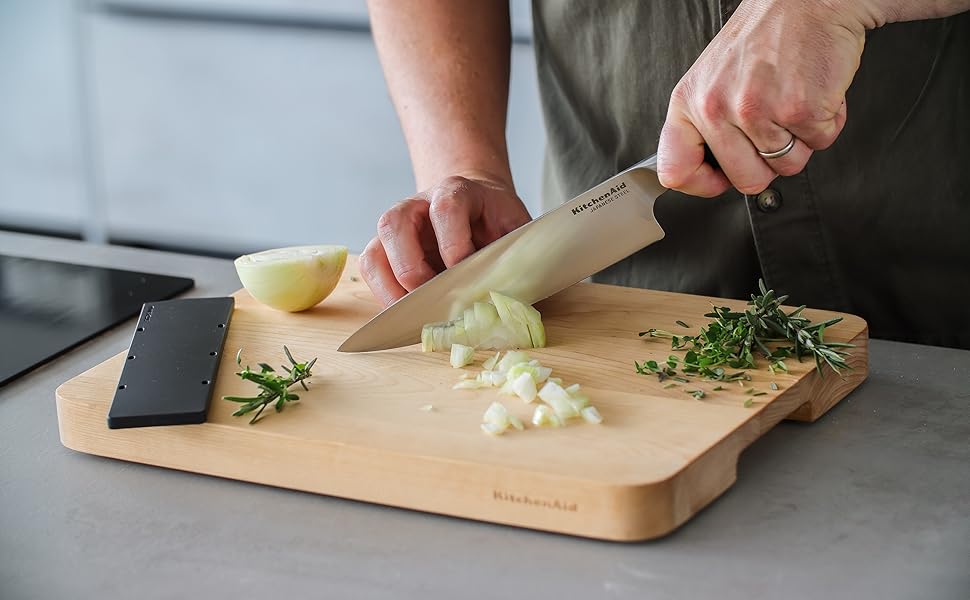The world of culinary arts demands precision, efficiency, and the right tools. Among these tools, knives hold a place of paramount importance. In particular, German knife edge types have gained a reputation for their durability and precision. Understanding the different edge types can significantly enhance your cutting skills and kitchen efficiency.

Why German Knives Stand Out
German knives are legendary for their robust construction and sharpness. They are typically made from high-carbon stainless steel, which offers a perfect blend of sharpness and durability. This makes them a favorite among culinary professionals worldwide. The meticulous craftsmanship behind these knives ensures that they can withstand the rigors of a busy kitchen environment.
Understanding Different Knife Edge Types
Plain or Straight Edge
The plain edge is the most common type found in German knives. These knives have a smooth, continuous edge that is ideal for clean, straight cuts. They are perfect for chopping vegetables, slicing meat, and other general-purpose tasks. The simplicity of the plain edge makes it easy to maintain and sharpen.
Serrated Edge
Serrated edges have a saw-like appearance and are excellent for cutting through tough surfaces without tearing the softer interior. This makes them ideal for cutting bread or tomatoes. The design allows for a clean cut with minimal effort, especially on foods with a hard crust or skin.
Hollow Edge
Hollow edge knives feature oval-shaped indentations along the blade. These dimples create air pockets that reduce friction and prevent food from sticking to the blade. They are particularly useful when slicing thin pieces of meat or vegetables, ensuring each slice is smooth and uniform.
Granton Edge
Similar to the hollow edge, the Granton edge has scallops on the sides of the blade. These scallops create air pockets that minimize friction and prevent food from sticking. This type of edge is often found in carving knives and is perfect for slicing large pieces of meat.
Choosing the Right Knife Edge
Selecting the right edge type depends on the tasks you frequently perform in the kitchen. For general-purpose use, a plain edge is versatile and easy to maintain. If you frequently slice bread, a serrated edge is indispensable. For precise, thin slices, especially of meat, a hollow or Granton edge is ideal.
Maintaining Your German Knives
Proper maintenance of your knives ensures they remain sharp and effective. Regular honing and occasional sharpening are essential for keeping the edge in top condition. You may find our guide on how to hone German knives useful for maintaining your tools.
Comparing German and Japanese Knives
While German knives are known for their durability and strength, Japanese knives are celebrated for their precision and light weight. Understanding the differences can help you choose the right tool for your culinary needs. For a detailed comparison, visit this external resource.
The Importance of Blade Thickness
The thickness of a knife blade affects its cutting ability and durability. German knives typically have thicker blades, providing strength and support for heavy-duty tasks. Learn more about German knife blade thickness and how it impacts your cutting experience.
History and Evolution of German Knives
The history of German knives is rich and fascinating. Brands like Zwilling and Wsthof have been crafting knives for centuries, combining traditional techniques with modern technology. Explore the history of Zwilling knives to understand the evolution of these culinary tools.

FAQs
What is the best German knife edge type for beginners?
For beginners, a plain edge knife is often recommended due to its versatility and ease of maintenance.
How often should I sharpen my German knife?
It depends on usage, but generally, honing your knife regularly and sharpening it every few months keeps it in prime condition.
Are German knives better than Japanese knives?
Both have their strengths. German knives are durable and robust, while Japanese knives are lightweight and precise. It depends on your cooking style and preference.
This article contains affiliate links. We may earn a commission at no extra cost to you.


